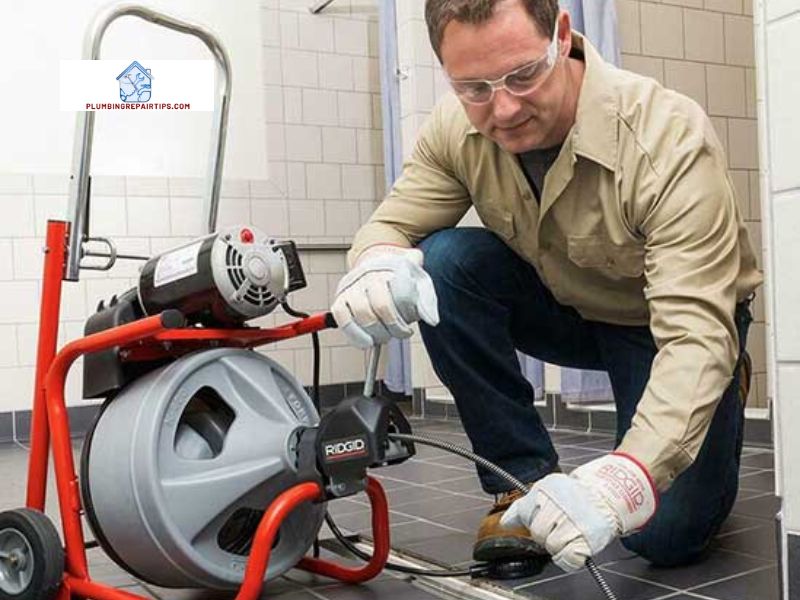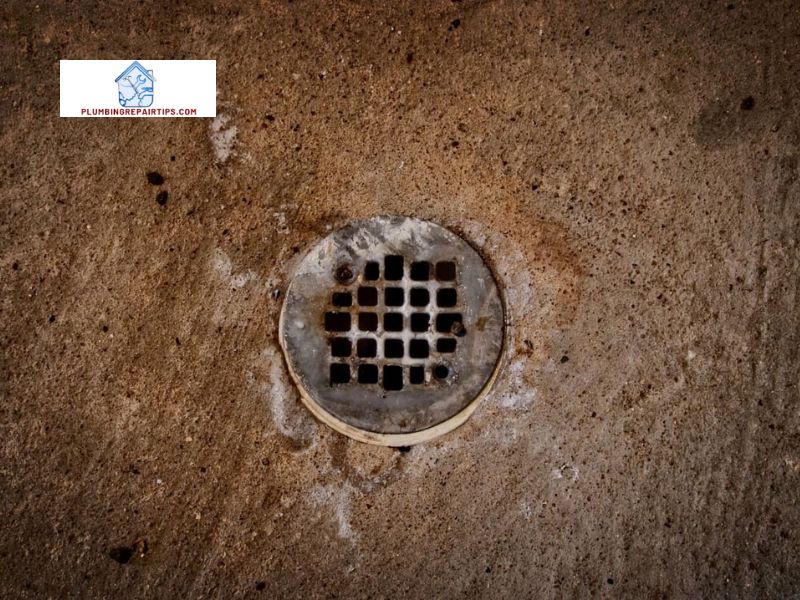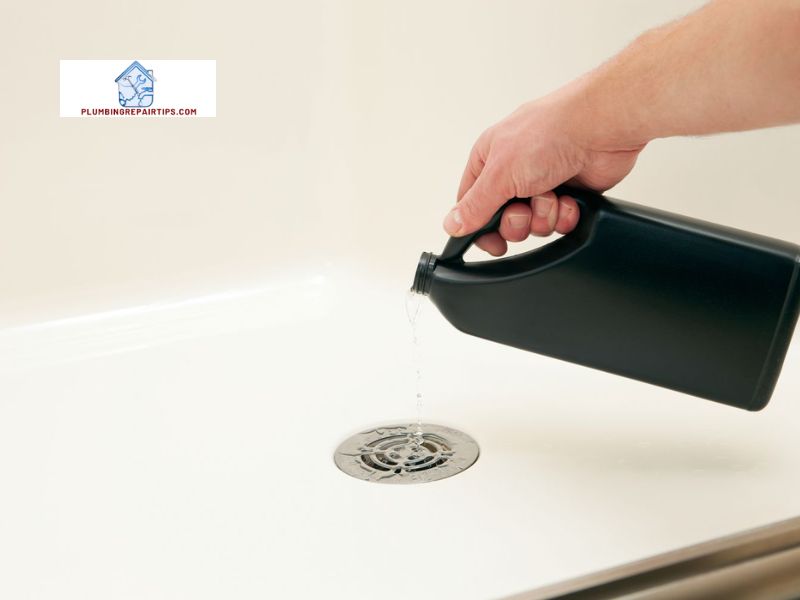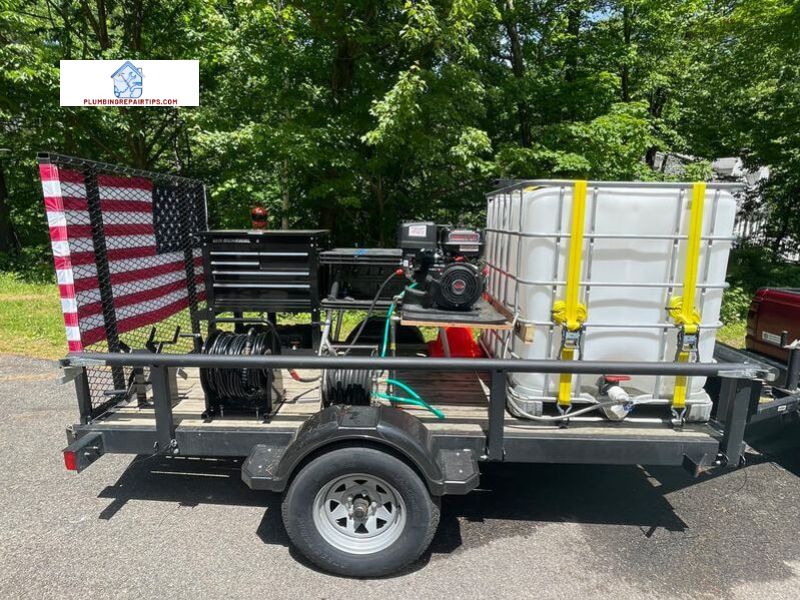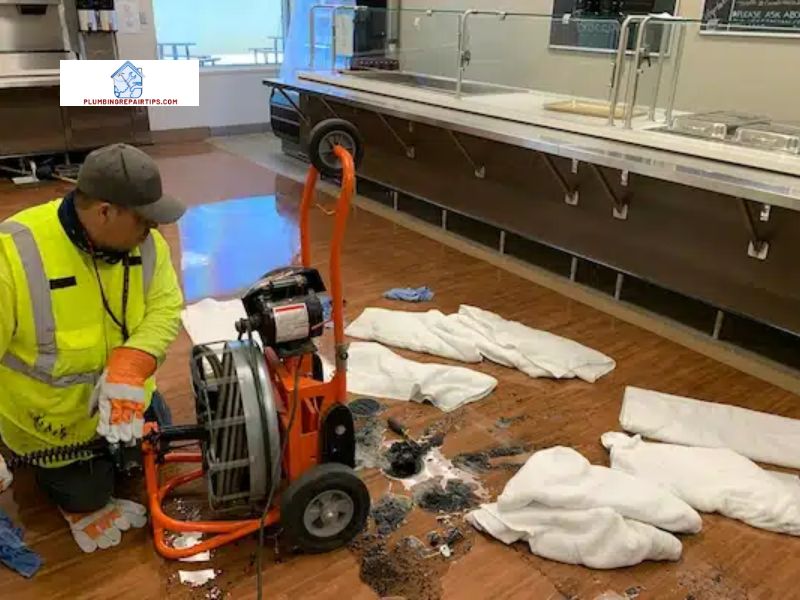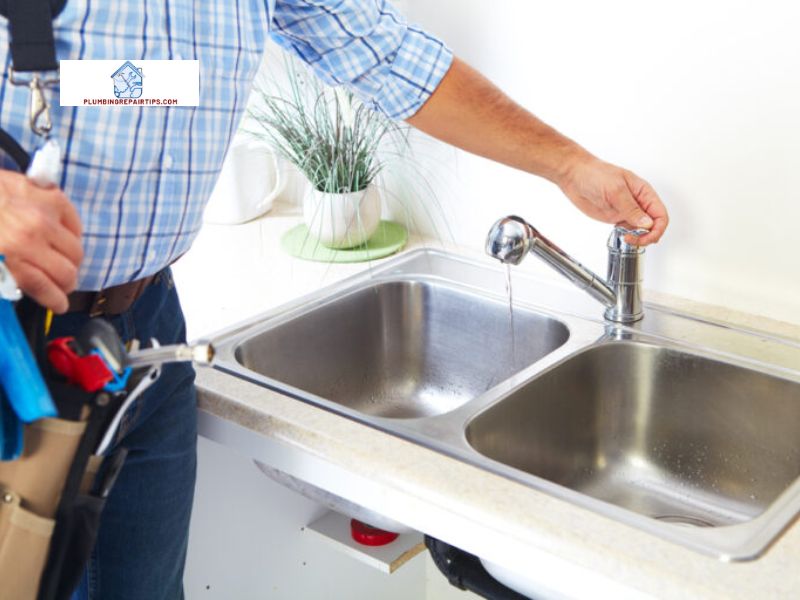Proper maintenance of your underground gutter drainage system is crucial to ensure optimal performance and prevent costly repairs. Neglecting your drains can result in clogs, water damage to your foundation, and even structural damage to your property.
In this expert guide, we will provide you with top tips for cleaning and maintaining your underground gutter drains. Whether you choose to do it yourself or hire a professional, plumbingrepairtips.com will equip you with the knowledge you need to keep your drains functioning efficiently.
Key Takeaways:
- Regular maintenance of your underground gutter drains is crucial to prevent clogs and damage to your property.
- Signs of a clogged drain include overflowing water, pooling water near the foundation, and erosion.
- DIY methods for unclogging underground gutter drains include using a drain snake and other tools.
- Hiring a professional underground gutter drain cleaning service can provide specialized expertise and equipment to effectively unclog drains.
- Preventive maintenance tips include installing gutter guards and extending downspouts away from the foundation.
- Repairing damaged drainage pipes and installing French drain systems are also effective measures to manage underground gutter drainage.
- Regular cleaning and inspection of your drains is important to identify potential issues early on.
Understanding the Underground Gutter Drainage System
If your home has a basement, chances are you have an underground gutter drainage system. This system is designed to prevent water from accumulating around the foundation of your home. Water can cause erosion, weaken the foundation, and eventually lead to costly repairs.
The underground gutter drainage system is made up of multiple components that work together to direct water away from the foundation of your home. These components include downspouts, PVC pipes, and catch basins.
Downspouts are the vertical pipes that connect the gutters on your roof to the PVC pipes that carry the water underground. The PVC pipes are typically buried several feet below ground and carry the water to the catch basins. Catch basins are essentially large containers that collect the water and then slowly release it into the soil or into a drainage system that leads away from your home.
Issues with the Underground Gutter Drainage System
There are several issues that can occur with the underground gutter drainage system. One common issue is clogs in the PVC pipes. These clogs can occur when debris such as leaves, sticks, and other outdoor debris accumulate in the downspouts and eventually make their way into the PVC pipes.
Another issue that can occur is damage to the PVC pipes. This can happen due to tree roots, shifting soil, or freezing and thawing cycles in colder climates. When the pipes are damaged, water can leak out and accumulate around the foundation of your home, causing erosion and potentially damaging the foundation itself.
Signs of a Clogged Underground Gutter Drain
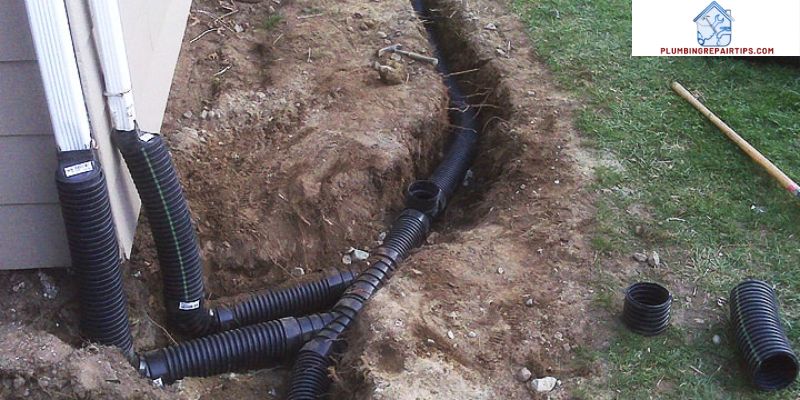
It is important to be aware of the signs that indicate a clogged underground gutter drain to prevent further damage. Here are some of the common signs:
- Water overflow from the gutters or downspouts
- Pooling water near the foundation
- Erosion or sinkholes near the foundation
If you notice any of these signs, it is crucial to take prompt action to unclog the drain. Ignoring the issue can lead to more severe problems, such as basement flooding or foundation damage.
Tip: If you are unsure whether your underground gutter drain is clogged, consider reaching out to a professional for an inspection. They can determine the level of damage and recommend the best solution to resolve the issue.
DIY Methods for Unclogging Underground Gutter Drains
Unclogging underground gutter drains can be a frustrating and time-consuming task. However, with the right tools and techniques, it is possible to tackle this job yourself. Here are some DIY methods for unclogging underground gutter drains:
1. Use a Drain Snake
A drain snake is a useful tool for unclogging underground gutter drains; it consists of a long, flexible cable with a spiral-shaped tip that can be inserted into the drain and rotated to dislodge any blockages. To use a drain snake:
- Locate the access point to the underground gutter drain.
- Insert the drain snake into the drain until you feel resistance.
- Rotate the drain snake to dislodge any blockages in the drain.
- Slowly retract the drain snake, pulling out any debris that has been dislodged.
Be sure to wear gloves and protective eyewear when using a drain snake.
2. Flush the Drain with Water
One simple way to unclog an underground gutter drain is to flush it with water. This method works best for minor clogs caused by dirt and debris. Here’s how to do it:
- Locate the downspout that connects to the clogged drain.
- Insert a garden hose into the downspout and turn on the water.
- Allow the water to run for several minutes, flushing out any debris in the drain.
Be sure to use a nozzle on the end of the garden hose to create enough pressure to flush out the debris.
3. Use a Wet/Dry Vacuum
A wet/dry vacuum can also be used to unclog underground gutter drains. Here’s how to do it:
- Locate the access point to the underground gutter drain.
- Insert the vacuum hose into the drain and turn on the vacuum.
- The vacuum should suck out any debris that is clogging the drain.
Be sure to wear gloves and protective eyewear when using a wet/dry vacuum.
When attempting to unclog underground gutter drains, it’s essential to take safety precautions. Always wear protective gear and use the appropriate tools for the job.
Hiring a Professional Underground Gutter Drain Cleaning Service
While some homeowners may prefer to tackle underground gutter drain cleaning themselves, others may not have the time, tools, or skills to do so effectively. In such cases, it’s best to hire a professional underground gutter drain cleaning service. These experts are equipped with specialized tools and techniques to tackle even the most stubborn clogs and ensure optimal water flow.
When choosing a professional service, it’s essential to do your research and find a reputable provider in your local area. Look for companies with years of experience, positive reviews from past customers, and a proven track record of delivering high-quality results. It’s also wise to inquire about the specific equipment and methods they use, as well as their pricing and availability.
By investing in a professional underground gutter drain cleaning service, homeowners can save time, effort, and money in the long run. These experts can help identify potential issues early on, prevent costly repairs or replacements, and keep your underground gutter drainage system functioning efficiently for years to come.
Preventive Maintenance for Underground Gutter Drains
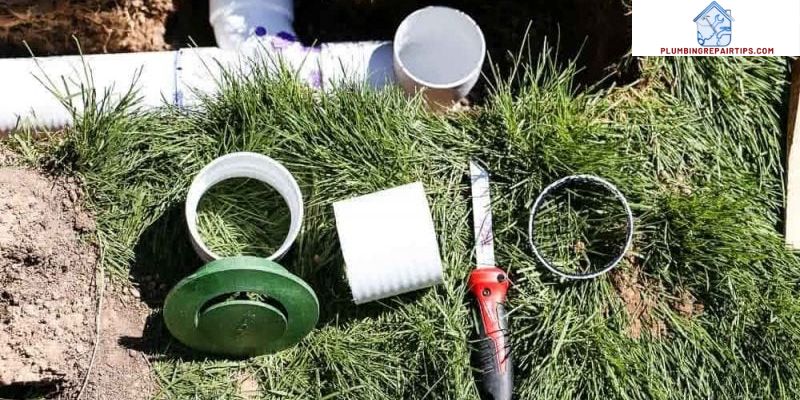
Regular upkeep and preventive maintenance are essential for keeping underground gutter drains functioning efficiently and avoiding costly repairs. Here are some tips to keep your drain system in top condition:
- Clean out gutters and downspouts regularly to prevent debris buildup.
- Install gutter guards to prevent leaves, twigs, and other debris from entering the gutter system.
- Inspect the drainage system twice a year for any signs of damage, such as cracks, leaks, or sagging pipes. Promptly address any issues to prevent further damage.
- Extend downspouts to direct water away from the foundation and prevent potential drainage issues.
By following these preventive maintenance steps, you can keep your underground gutter drain functioning efficiently and minimize the risk of costly repairs or replacements.
Extending Downspouts for Better Drainage
One way to prevent potential underground gutter drainage issues is to extend downspouts away from the foundation. This will prevent water from pooling near the house and potentially causing damage.
You can purchase downspout extensions at most hardware stores or online. There are several types of extensions available, including flexible and rigid options. Choose the type that is best suited for your needs and budget.
Follow these steps to install a downspout extension:
- Remove the existing downspout. This may involve unfastening screws or brackets that hold it in place.
- Attach the extension to the existing downspout using screws or the provided connectors.
- Position the extension so that it directs water away from the foundation and towards an appropriate drainage area.
- Secure the extension in place using screws or brackets.
- Test the extension by running water through the gutter system and ensuring that water is flowing freely through the downspout and extension.
Extending downspouts may require additional reinforcement if they are carrying a large volume of water. In this case, consult a professional to ensure that your installation is safe and effective.
Repairing Damaged Underground Gutter Drainage Pipes
Damage to underground gutter drainage pipes can lead to inefficient water flow and potential water damage to your property. Fixing these pipes may seem daunting, but with the right materials and instructions, it can be a DIY project.
The most common types of damage to these pipes are cracks, leaks, and joint separations. To repair a crack in a PVC pipe, make a V-shaped cut around the crack and remove the damaged portion. Next, dry the area thoroughly and apply PVC primer to both the pipe and the fitting. After the primer dries, apply PVC cement on both pieces and fit them together, holding for several seconds to ensure a proper bond.
For a leaking joint, dry the area around the joint and use a hacksaw to cut the joint apart. Clean the inside of the joint and the outside of the pipes and reassemble with a new joint. Apply PVC primer and cement as described above.
If a section of the pipe needs to be replaced, use a PVC cutter to remove the damaged section and replace it with a new one. Make sure to reseal the new section with primer and cement.
For repairs on metal pipes, use a hack saw to remove the damaged section and replace it with a new piece. Use pipe connectors to join the new section to the existing pipe, and tighten them with a wrench.
Be sure to wear safety gloves and glasses when handling these materials and tools to avoid any injuries. If you are not comfortable with DIY repairs, consider hiring a professional underground gutter drainage pipe repair service.
Installing a French Drain System
If your underground gutter drainage system is consistently unable to keep up with heavy rainfalls or if there are wet spots around your home’s foundation, it may be time to consider installing a French drain system.
A French drain is a trench filled with gravel or rock that redirects surface and groundwater away from an area. It can be installed along the perimeter of your home’s foundation or in areas where standing water is a persistent problem. The system works by allowing water to flow into the trench and then through a perforated pipe, which carries the water away from your home.
Here’s how to install a French drain system:
- Plan the layout: Determine the location and direction of the drain. Mark the location on the ground using spray paint or flags.
- Dig a trench: Excavate a trench using a shovel or trencher. The trench should be about 6 to 12 inches wide and 18 to 24 inches deep. Make sure the trench slopes downward away from your home.
- Line the trench with fabric: Lay landscape fabric along the length of the trench to prevent soil and debris from clogging the drainpipe.
- Install the pipe: Place a perforated drainpipe with a sleeve in the trench, making sure it’s sloped downward and away from the home’s foundation.
- Fill the trench with gravel: Fill the trench with about 2 to 3 inches of gravel or rock, covering the drainpipe. Make sure the gravel is evenly distributed and doesn’t obstruct the pipe’s perforations.
- Finish with topsoil: Cover the gravel with topsoil and plant grass over the trench.
It’s important to note that installing a French drain system can be a complex and time-consuming process. If you’re unsure about your abilities or if you want to ensure the job is done right, consider hiring a professional drainage contractor.
Maintaining Debris Filters in Underground Gutter Drains
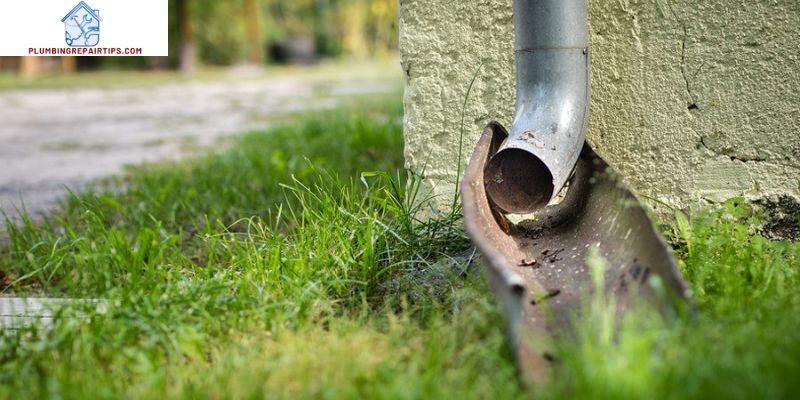
Debris filters play an essential role in preventing clogs and maintaining the proper functioning of underground gutter drains. These filters trap leaves, twigs, and other debris that may accumulate in the gutters and prevent them from entering the drainage system.
However, over time, these filters can become clogged themselves and impede water flow, which can lead to overflow and other issues. Therefore, it is crucial to maintain debris filters regularly to keep them clean and functioning efficiently.
To clean debris filters, first, locate them in your underground gutter system. They are typically located near the downspout in the drainage pipe or at the entrance to a catch basin.
Next, use a garden hose or pressure washer to blast away any debris that has accumulated on the filters. You can also use a brush or a tool with long bristles to scrub away stubborn debris.
If the filters are particularly dirty, you may need to remove them from the gutter system and clean them more thoroughly. To do this, turn off the water supply to the gutters and carefully remove the filters. Then, rinse them with water and scrub away any remaining debris with a brush before re-installing them.
By maintaining debris filters regularly, you can prevent clogs and ensure that your underground gutter drains function properly. You can also extend the lifespan of your drainage system and avoid costly repairs or replacements in the future.
Importance of Regular Cleaning and Inspection
Regular cleaning and inspection are critical to ensuring the proper functioning of underground gutter drains. By taking proactive measures to maintain the drainage system, homeowners can identify potential issues early on and prevent costly repairs or replacements. Here are some essential tips for maintaining your underground gutter drains:
- Clean your gutters: Clear your gutters of leaves, debris, and other obstructions at least twice a year. This will ensure that rainwater can flow freely through the gutters and into the drainage system.
- Inspect your downspouts: Check your downspouts regularly to make sure they are properly attached and free of clogs. You can use a garden hose to flush out any debris that may be blocking your downspouts.
- Look for signs of damage: Inspect your drainage system for signs of damage, such as cracks or leaks. Address any issues promptly to prevent further damage to your drainage system.
- Check for pooling water: If you notice water pooling near your foundation, it may be a sign that your drainage system is not working properly. Address the issue immediately to prevent water damage to your home.
- Consider installing gutter guards: Gutter guards can help prevent debris from accumulating in your gutters and clogging your drainage system. Make sure to clean your gutter guards regularly to ensure optimal performance.
- Call a professional: If you are unsure how to properly maintain your underground gutter drains, or if you notice significant damage or clogs, it may be time to call in a professional. They can provide expert guidance and services to keep your drainage system functioning properly.
By following these tips and performing regular cleaning and inspection, homeowners can rest assured that their underground gutter drains will function optimally and avoid costly repairs or replacements.
Clearing Drain Lines and Catch Basins
Clearing the drain lines and catch basins of your underground gutter drainage system is crucial for proper functioning. Neglecting this maintenance task can lead to serious clogs and damage to the system.
You can clear the drain lines using a drain snake or a high-pressure water jet. To use a drain snake, insert it into the drain opening and rotate it clockwise while pushing it forward. This will help break up any clogs or debris inside the drain. Use the high-pressure water jet to blast away any remaining debris, ensuring proper water flow through the drain lines.
Catch basins are typically located at the lowest point of the drainage system and collect debris that may have made it through the downspouts. To clear catch basins, use a shovel or garden trowel to remove any debris that has accumulated. Take care not to damage the basin or the surrounding area while doing so.
Regularly clearing the drain lines and catch basins of your underground gutter drainage system is an important preventive maintenance task that can help avoid costly repairs and replacements.
Conclusion
Keeping your underground gutter drains clean and well-maintained is critical to prevent water damage to your property. Neglecting this crucial part of your home’s drainage system can lead to costly repairs and even foundation damage.
By following the expert tips provided in this guide, you can ensure optimal drainage and minimize the risk of clogs and backups. Whether you choose to attempt DIY methods or hire a professional drainage cleaning service, taking action to maintain your drain system is essential.
The preventive maintenance tips discussed in this article, such as regular cleaning, installing gutter guards, inspecting the system for damage, and extending downspouts, are simple yet effective ways to keep your underground gutter drains functioning at their best.
Don’t wait until it’s too late. Take action today to protect your property from water damage by cleaning and maintaining your underground gutter drainage system.
FAQ
Q: What is the importance of underground gutter drain cleaning?
A: Underground gutter drain cleaning is important to ensure that the drains are functioning efficiently and to prevent potential issues such as water overflow, pooling water near the foundation, and erosion.
Q: How does the underground gutter drainage system work?
A: The underground gutter drainage system includes components such as downspouts, PVC pipes, and catch basins. It works by collecting rainwater from the gutters and directing it away from the foundation of the building.
Q: What are the signs of a clogged underground gutter drain?
A: Signs of a clogged underground gutter drain include water overflow, pooling water near the foundation, and erosion. It is important to take prompt action to prevent further damage.
Q: Are there any DIY methods for unclogging underground gutter drains?
A: Yes, there are DIY methods for unclogging underground gutter drains. These methods include using a drain snake and other tools. It is important to follow safety precautions when attempting to unclog the drains.
Q: What are the benefits of hiring a professional underground gutter drain cleaning service?
A: Hiring a professional underground gutter drain cleaning service provides the benefits of expertise, specialized equipment, and effective unclogging of the drains. It is important to find reputable service providers in the local area.
Q: How can I prevent clogs in underground gutter drains?
A: Preventive maintenance tips for underground gutter drains include regular cleaning, installing gutter guards to prevent debris buildup, and inspecting the drainage system for any signs of damage.
Q: Can I extend my downspouts for better drainage?
A: Yes, extending downspouts can help direct water away from the foundation and prevent potential drainage issues. Instructions on how to install downspout extensions and information about different types are available.
Q: How can I repair damaged underground gutter drainage pipes?
A: To repair damaged underground gutter drainage pipes, it is important to identify the common types of damage such as cracks and leaks. Step-by-step instructions on how to fix them using appropriate materials are provided.
Q: What is a French drain system and how can it be installed?
A: A French drain system is used to effectively manage underground gutter drainage. Information about its installation process and the materials needed are provided to ensure optimal draining.
Q: How can I maintain debris filters in underground gutter drains?
A: Maintaining debris filters in underground gutter drains is important to prevent clogs and ensure proper water flow. Instructions on how to clean and maintain these filters regularly are provided.
Q: Why is regular cleaning and inspection important for underground gutter drains?
A: Regular cleaning and inspection of underground gutter drains can help identify potential issues early on and prevent costly repairs or replacements. It is important to maintain the drains to ensure their efficient functioning.
Q: How can I clear drain lines and catch basins in underground gutter drains?
A: Clearing drain lines and catch basins is important to ensure the proper functioning of underground gutter drains. Tips on using appropriate tools and techniques to remove any blockages or debris are provided.
